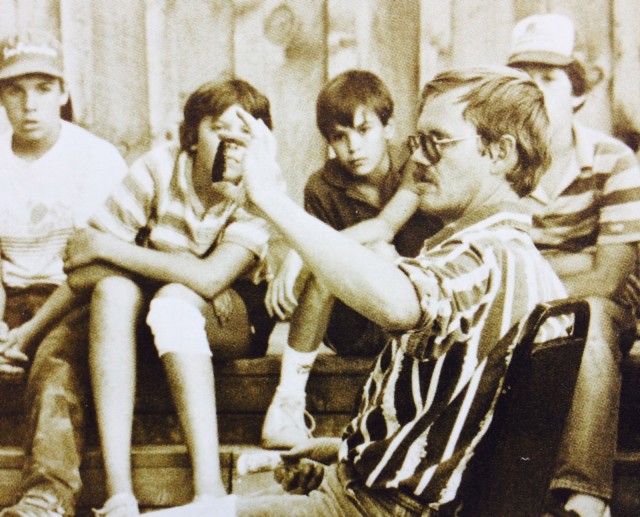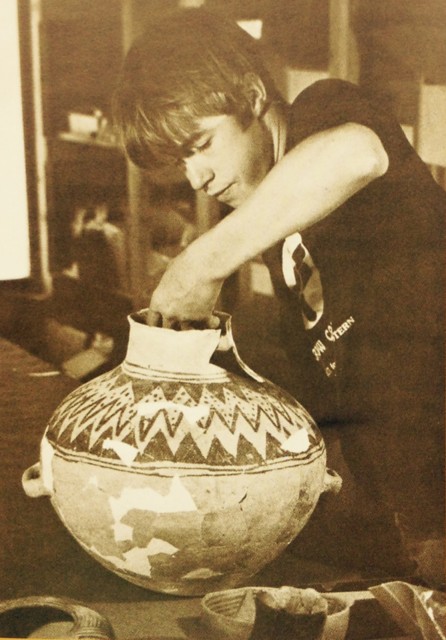- Home
- >
- Preservation Archaeology Blog
- >
- From Arrowhead Hunter to Archaeologist
Between now and October 17, 2015, Archaeology Southwest is participating in the Archaeological Institute of America’s celebration of International Archaeology Day (10/17/15) by sharing blog posts about why—or how—we became archaeologists. Today we feature Allen Denoyer, who leads our Hands-On Archaeology program. Previous posts in the series are here.
(October 15, 2015)—I grew up in the small, sleepy town of Salida, located in the approximate geological center of Colorado. From a very young age, my brother and I would accompany our parents on fishing and hiking trips up into the mountains. My parents also enjoyed arrowhead hunting, and by the time I was 6, I was already starting to find arrowheads. We didn’t know then that picking up arrowheads was harming the archaeological record, and potentially disrespectful to native people.
I was completely baffled as to how people could have made such arrowheads. Were they carved or ground? Was there some kind of magic involved? Dad said he had used a nail and a vice to try to make them, but had no success; he gave it up as his friends ridiculed him for trying.
One night, we were watching PBS, and a show about the First Americans came on. At one point in the show, archaeologist Bruce Bradley showed how people would have made Clovis projectile points. Dad and I were transfixed—and pretty confused—watching this, but the flaked stone point Bradley made was amazing.

About a year or two later, in 1983, an employee who worked at my parents’ greenhouse brought in an advertisement for a summer camp for junior-high and high-school students to learn how to do archaeology. The organization was the Center for American Archaeology, affiliated with Northwestern University. This organization had a Kampsville, Illinois, campus and a campus near Cortez, Colorado, called Crow Canyon.
I was able to earn enough money to attend a two-week field school for junior high students. The staff included Chuck and Jenny Adams and Bruce Bradley. Over the course of two weeks, we learned about the lives of Ancestral Pueblo people (at that time, archaeologists called them “Anasazi”). We learned basic excavation skills, mapping skills, and lab analysis skills.
We also had programs on experimental archaeology, and we got to flintknap (make stone tools using ancient methods), make pottery, and work on a pithouse replica (is this sounding familiar?). I loved it: everything we did was fun and captured my imagination. And after watching Bruce flintknap in person this time, I knew I had to do that, for sure.
I returned to Crow Canyon the next year for the three-week high school field school. As luck would have it, I won a scholarship that enabled me to attend for two more weeks. That year, I worked at Sand Canyon Pueblo, a late Pueblo III village.

Over the next three summers, while I was in high school, I worked at Crow Canyon. Three of us students worked part-time as learning assistants. The rest of the time, we worked for housekeeping, landscaping, and maintenance, and we did most of the airport runs on weekends.
Those were great times. And I’m still having a great time! Now I make the points, instead of hunting them. And I teach others how to make them, and why it is important not to hunt them.
One thought on “From Arrowhead Hunter to Archaeologist”
Comments are closed.

Great to hear all of these very personal and very diverse stories about our friends at Archaeology Southwest!